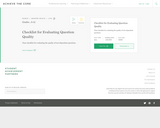
Clear checklist for evaluating the quality of text-dependent questions.
- Subject:
- Arts and Humanities
- Material Type:
- Teaching/Learning Strategy
- Provider:
- OER Commons
- Provider Set:
- Common Core Reference Collection
- Date Added:
- 01/02/2013

Clear checklist for evaluating the quality of text-dependent questions.

Contains tool overview and student work sample
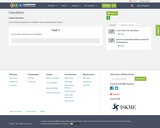
Cover sheet and picture for checklists and checklist bulletin board.
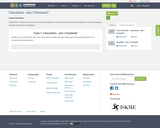
Checklist for students to use to ensure that all aspects of a constructed response math problem are answered and checked over before completion.
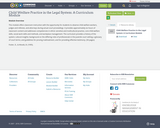
This module offers classroom instruction with the opportunity for students to observe child welfare workers, judges and referees, and attorneys during actual court proceedings. It provides approximately six hours of classroom content and addresses competencies in ethnic sensitive and multicultural practice, core child welfare skills, social work skills and methods, and workplace management. The curriculum provides a history of the system; cultural insights; background on the differing roles of professionals in the juvenile court setting; a glossary of court terms; and guidelines for proving maltreatment, and for providing effective testimony. (50 pages)Foster, D., & Woods, B. (1995).
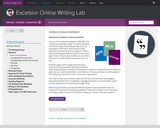
Here you’ll find extensive support for APA, MLA, and Chicago documentation styles. This section features instructional videos that show you how to set up your papers in APA, MLA, and Chicago formats, interactive checklists, and visual support for both in-text documenting and referencing at the end of your paper. If you’re new to documentation or just need a refresher, the Citations & Documentation area can help.
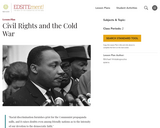
This lesson plan attempts to dissolve the artificial boundary between domestic and international affairs in the postwar period to show students how we choose to discuss history.
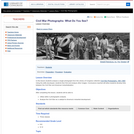
Students use Library of Congress primary sources to examine the Civil War and American industrialization.

ClassMood App is a classroom tool that helps teachers create the mood for learning. It aims to help make teaching and learning more enjoyable. It provides teachers with mood changing activities for their classroom and works toward helping students take control of their moods.
ClassMood App is applicable to multiple educational contexts from primary school to higher education. It has been developed in a collaboration with experts from neuroscience, education and learning design and tested with students from upper primary to university.
How does it work?
When it’s too hot or too cold, it is hard to learn as we can’t stop thinking about how uncomfortable it is. But once we notice the temperature, we can adjust it as needed and free up space in our heads for thinking. Positive moods and states can free up space for thinking and learning. This is the concept of ClassMood App.
The technology is a responsive and free-to-use web-based tool. Teachers can simply create a mood measuring event and share the unique code with your students. Each student can anonymously select their current mood and add the cause of their mood.
The App provides teachers with real-time data via a teacher’s dashboard to identify the aggregate mood of a class and recommends classroom activities to help teachers guide learners to moods that are more conducive to learning. Activities include mindfulness breathing activities and social games involving movement.
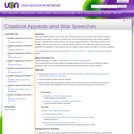
This set of lessons extends over several days. Students watch a Prezi and take notes about the classical appeals (ethos, pathos, and logos). Students then read and annotate (focusing on the classical appeals) Winston Churchill's "Be Ye Men of Valour" and Franklin Delano Roosevelt's "Pearl Harbor Address to the Nation." Students work in groups to complete a graphic organizer which helps them analyze the classical appeals in the speeches. Finally, students write an analysis of ethos, pathos, and logos in one of the speeches.
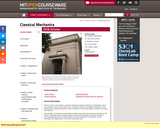
This first course in the physics curriculum introduces classical mechanics. Historically, a set of core concepts—space, time, mass, force, momentum, torque, and angular momentum—were introduced in classical mechanics in order to solve the most famous physics problem, the motion of the planets.
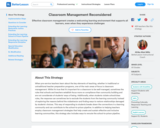
Effective classroom management creates a welcoming learning environment that supports all learners, even when they experience challenges.
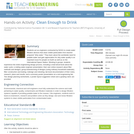
Students act as engineers contracted by NASA to create water filtration devices that clean visible particulates from teacher-prepared "dirty water." They learn about the worldwide need for potable water and gain appreciation for why water quality is an important issue for people on Earth as well as on the International Space Station. Working in groups, students experience the entire engineering design process, including a read-aloud book about the water cycle; a visiting water engineer presentation; their own online research about filter methods and designs; group brainstorming of designs (using ordinary household materials); filter construction and testing; redesign and retesting; lab book documentation of their notes, research, plans and results; and a summary poster presentation at a mini-engineering fair. Two design planning worksheets, a poster layout suggestion sheet and a grading rubric are provided.
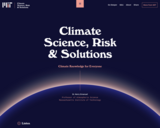
The goal of this site is to summarize the most important lines of evidence for human-caused climate change. It confronts the stickier questions about uncertainty in our projections, engages in a discussion of risk and risk management, and concludes by presenting different options for taking action. This site sticks to the facts and does not get into politics. We hope that the facts prepare you for more effective conversations with your community about values, trade-offs, politics, and actions.
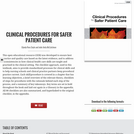
Short Description:
This open educational resource (OER) was developed to ensure best practice and quality care based on the latest evidence, and to address inconsistencies in how clinical health care skills are taught and practised in the clinical setting. The checklist approach, used in this textbook, aims to provide standardized processes for clinical skills and to help nursing schools and clinical practice partners keep procedural practice current. Each skill/procedure is covered in a chapter that has learning objectives, a brief overview of the relevant theory, checklists of steps for procedures with the rationale behind each step of the process, and a summary of key takeaways. Key terms are set in bold throughout the book and laid out again in a Glossary in the appendix. All 88 checklists are also summarized, and hyperlinked to the original checklist, in the appendix.
Long Description:
This open educational resource (OER) was developed to ensure best practice and quality care based on the latest evidence, and to address inconsistencies in how clinical health care skills are taught and practised in the clinical setting. The checklist approach, used in this textbook, aims to provide standardized processes for clinical skills and to help nursing schools and clinical practice partners keep procedural practice current. Each skill/procedure is covered in a chapter that has learning objectives, a brief overview of the relevant theory, checklists of steps for procedures with the rationale behind each step of the process, and a summary of key takeaways. Key terms are set in bold throughout the book and laid out again in a Glossary in the appendix. All 88 checklists are also summarized, and hyperlinked to the original checklist, in the appendix.
This book should be used in conjunction with existing courses in any health care program. This book is not intended to replace core resources in health care programs that provide comprehensive information concerning diseases and conditions. An understanding of medical terminology, human anatomy, physiology, and pathophysiology is a required asset to use this book effectively. The development of technical skills is based on the knowledge of, practice to achieve proficiency in, and attitudes related to the skill, and an awareness of how our roles affect our patients and other health care professionals. This book contributes to enhancing safer care for patients by outlining evidence-based practices, and looking beyond just the technical skill to understanding the types of expertise and knowledge required to decrease adverse events.
Word Count: 136960
ISBN: 978-1-989623-15-2
(Note: This resource's metadata has been created automatically by reformatting and/or combining the information that the author initially provided as part of a bulk import process.)
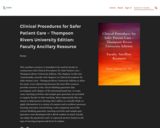
This ancillary resource is intended to be used by faculty in conjunction with Clinical Procedures for Safer Patient Care – Thompson Rivers University Edition. The chapters in this text intentionally coincide with chapters in Clinical Procedures for Safer Patient Care - Thompson Rivers University Edition to allow for easier cross referencing between the texts. This resource provides answers to the critical thinking questions that accompany each chapter of the aforementioned text. In some cases, learning activities and sample quiz questions are provided to support faculty in their teaching. More importantly they are meant to help learners develop their ability to critically think, to apply information in a variety of contexts and to achieve necessary learning outcomes toward being a safe competent nurse. The critical thinking questions, learning activities and sample quiz questions were developed with a BScN student in mind. Faculty can adapt the question(s) and / or expected answers based on the type of nursing program and level of student.

Instructional expert Jim Knight visits Chris Korinek to observe his social science classroom. Chris and Jim discuss scaffolding techniques, and when to use closed versus open questions.
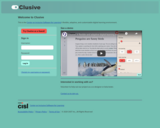
The Center on Inclusive Software for Learning's flexible, adaptive, and customizable digital learning environment.

This lesson plan was created by Kellee Vornhagen as part of the 2021 Nebraska CTE-Beginning Teachers Institute. The attached lesson plan is designed for students in grades 9-12 as a introduction to a collaboration in the classroom. This lesson plan can also be used in any class requiring group work of any kind. Students will create a list of expectations for collaboration, create a poster and present it to the rest of the class. These will be the norms used for group work for the rest of the term.
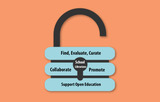
Open educational resources (OER) play an increasingly important role in the era of open education.This module addresses the questions around how to integrate OER into a school library collection. Specifically, it looks at:What are the considerations, such as quality, accessibility, and curation that might make them more challenging to manage than traditional library resources?How do you begin to work with classroom teachers to introduce and integrate OER into their arsenal of classroom resources?How do you link selection of OER to your school's curriculum?What role does OER play in the larger concept of open pedagogy?A final look at OER and collection development as a social justice issue